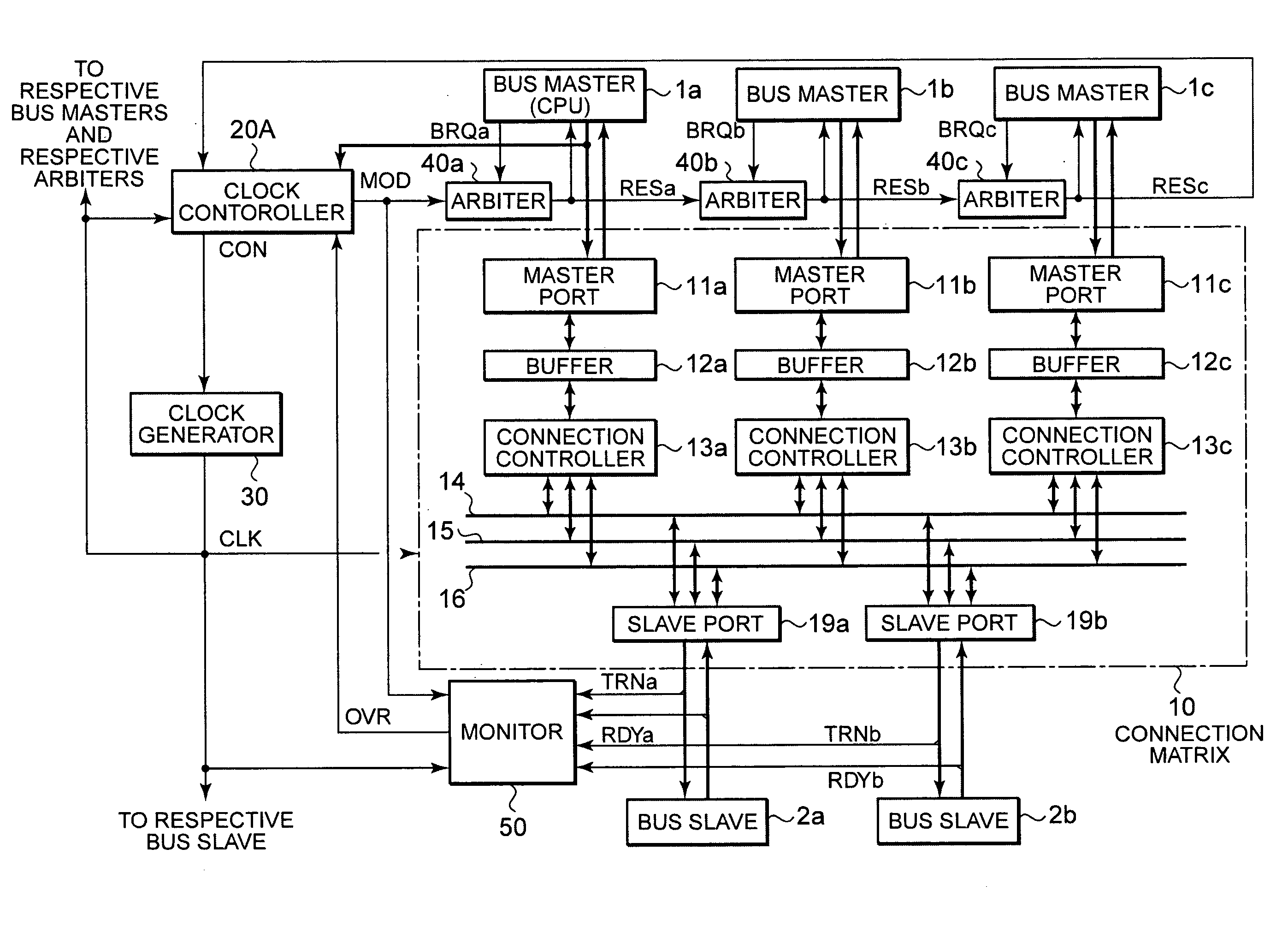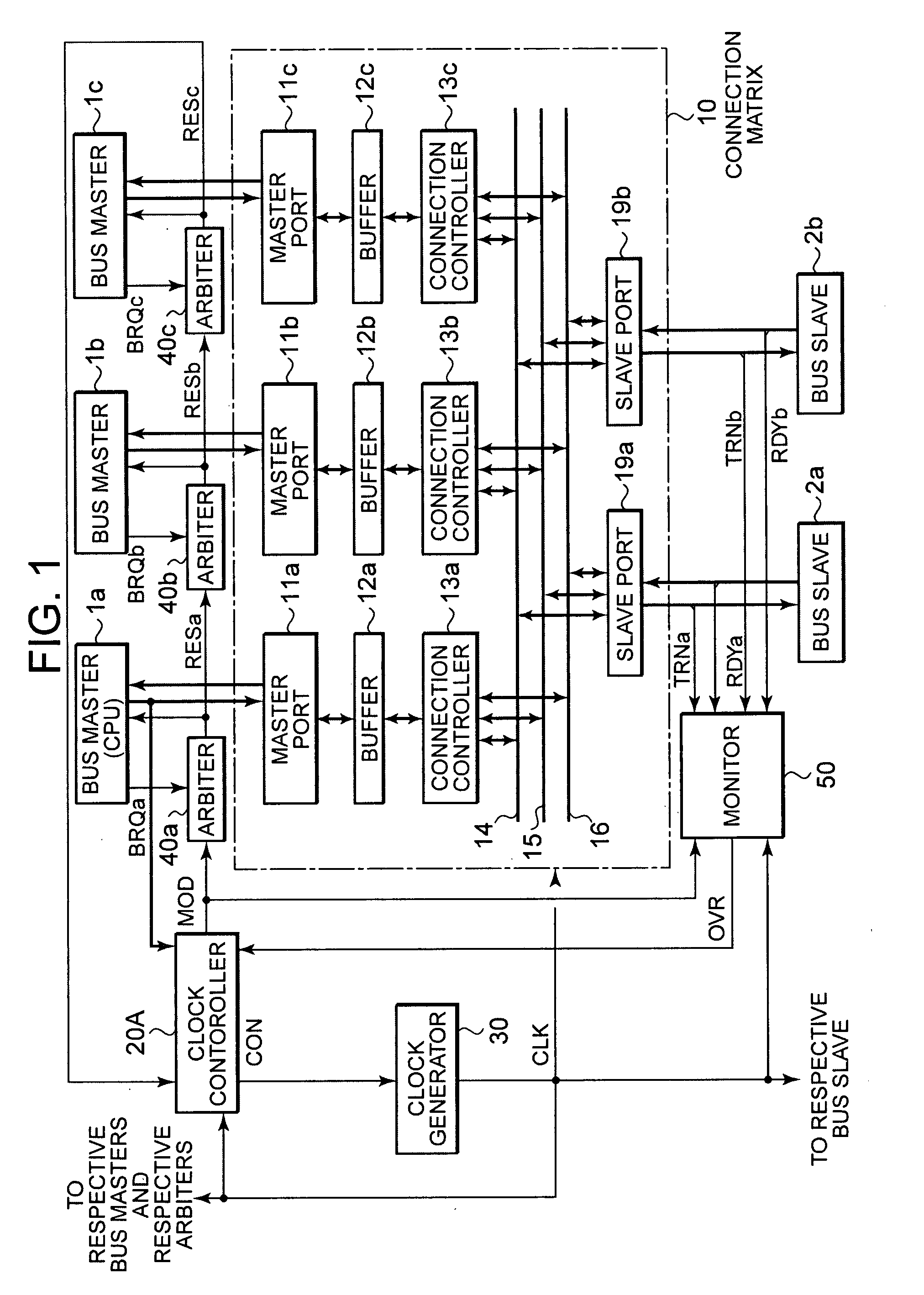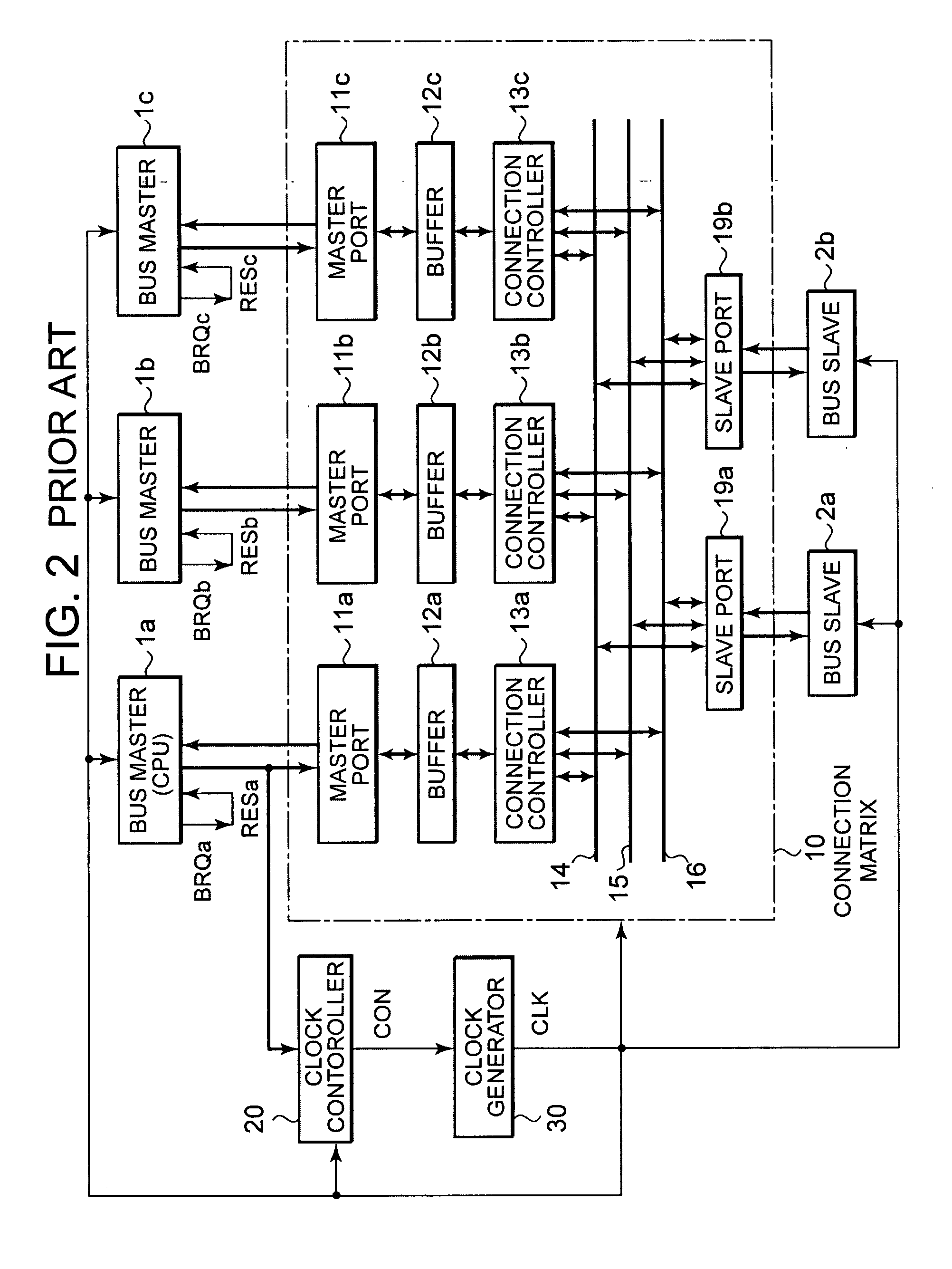Multilayered bus system
a bus system and multi-layer technology, applied in sustainable buildings, instruments, high-level techniques, etc., can solve the problems of system clock clk stop, conventional multi-layer bus system, and take time to stop or resume operations, so as to achieve reliable and rapid transition to power-saving mode, stop processing of each bus master
- Summary
- Abstract
- Description
- Claims
- Application Information
AI Technical Summary
Benefits of technology
Problems solved by technology
Method used
Image
Examples
first preferred embodiment
[0034]FIG. 1 is a configuration diagram of a multilayered bus system showing a first embodiment of the present invention. Elements common to those shown in FIG. 2 are given common reference numerals respectively.
[0035]The multilayered bus system is configured so as to connect between a plurality of bus masters each including a CPU and a plurality of bus slaves using a plurality of common buses and perform data transfers in sync with a system clock through a plurality of buffer memories for temporarily retaining data therein. In a manner similar to FIG. 2, the multilayered bus system is equipped with a connection matrix 10 that connects between bus masters 1a, 1b and 1c and bus slaves 2a and 2b according to requests made from the master side, and a clock generator 30 that generates a system clock CLK.
[0036]Incidentally, when the respective bus masters 1a through 1c are connected to the connection matrix 10, they output bus request signals BRQa through BRQC respectively. When the bus ...
second preferred embodiment
[0057]FIG. 4 is a configuration diagram of a multilayered bus system showing a second embodiment of the present invention. Elements common to those shown in FIG. 1 are given common reference numerals respectively.
[0058]The multilayered bus system is provided with FIFOs 17a through 17c in place of the buffers 12a through 12c shown in FIG. 1, and a monitor constituted of an inverter 56 and a four-input AND 57 as an alternative to the monitor 50.
[0059]The FIFOs 17a through 17c are buffer memories which can be read in a data-written sequence. They are capable of outputting signals indicative of the condition of written data, i.e., indicative of whether the buffers are full or empty. Empty signals EMPa through EMPc indicative of whether the respective FIFOs 17a through 17c are empty are supplied as three input signals of the AND 57. Further, a mode designation signal MOD outputted from a clock controller 20A is inverted by an inverter 56, after which the signal is supplied to the AND 57 ...
PUM
 Login to View More
Login to View More Abstract
Description
Claims
Application Information
 Login to View More
Login to View More - R&D
- Intellectual Property
- Life Sciences
- Materials
- Tech Scout
- Unparalleled Data Quality
- Higher Quality Content
- 60% Fewer Hallucinations
Browse by: Latest US Patents, China's latest patents, Technical Efficacy Thesaurus, Application Domain, Technology Topic, Popular Technical Reports.
© 2025 PatSnap. All rights reserved.Legal|Privacy policy|Modern Slavery Act Transparency Statement|Sitemap|About US| Contact US: help@patsnap.com



